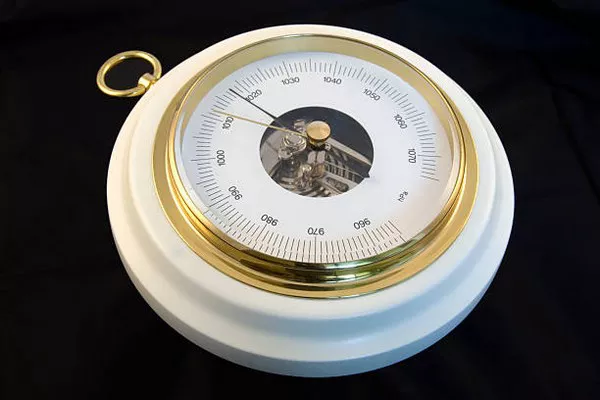Barometric pressure, also known as atmospheric pressure, is the force exerted by the atmosphere at a given point. It plays a crucial role in various weather conditions and has a significant impact on human health, particularly concerning headaches. Many individuals report experiencing headaches or migraines when there are changes in barometric pressure. This article delves into the science behind barometric pressure, how it influences headaches, and strategies to mitigate its effects.
The Science of Barometric Pressure
Barometric pressure is measured using a barometer, with readings typically given in inches of mercury (inHg) or millibars (mb). Normal sea-level pressure is about 1013.25 mb or 29.92 inHg. This pressure fluctuates with weather systems; high pressure is often associated with clear, calm weather, while low pressure typically accompanies storms and unsettled weather.
When barometric pressure changes, it can affect the human body in various ways. One of the most common complaints is headaches, which can range from mild discomfort to severe migraines. Understanding the mechanisms behind this phenomenon requires a closer look at how the body reacts to these pressure changes.
How Barometric Pressure Affects the Body
The human body is constantly in a state of equilibrium with the external environment. Sudden changes in barometric pressure can disrupt this balance, leading to various physiological responses. Here are some key ways barometric pressure changes can impact the body:
Sinus Cavities and Air Pressure: The sinuses are air-filled cavities in the skull that help humidify the air we breathe and enhance our voices. Changes in external pressure can cause the air trapped in the sinuses to expand or contract, leading to pressure imbalances. This can result in pain and discomfort, often experienced as a headache.
Blood Vessel Dilation: Barometric pressure changes can affect the dilation and constriction of blood vessels. In particular, low barometric pressure can cause blood vessels to expand, which increases blood flow to the brain and can trigger headaches or migraines in susceptible individuals.
Cerebral Pressure Changes: The brain is encased in the skull and surrounded by cerebrospinal fluid, which helps cushion and protect it. Changes in external pressure can alter the pressure within the skull, potentially leading to headaches.
Barometric Pressure and Migraines
Migraines are a severe type of headache characterized by throbbing pain, often accompanied by nausea, vomiting, and sensitivity to light and sound. Numerous studies have shown a correlation between barometric pressure changes and the onset of migraines.
A study published in the journal Headache examined the effects of weather patterns on migraine frequency. The researchers found that low barometric pressure and rapid pressure changes were significantly associated with an increased risk of migraines. This supports the anecdotal evidence that many migraine sufferers report weather changes as a common trigger.
Specific Barometric Pressure Readings and Headaches
While it is challenging to pinpoint an exact barometric pressure reading that universally causes headaches, certain trends have been observed:
Low Barometric Pressure: Readings below 29.92 inHg (1013.25 mb) are often linked to headaches. This is particularly true when the pressure drops rapidly, as the body has less time to adjust to the changes.
Rapid Pressure Changes: A quick drop or rise in barometric pressure can trigger headaches. For instance, moving from high to low pressure rapidly, such as during the approach of a storm, can be problematic for many individuals.
Individual Sensitivity: It’s important to note that sensitivity to barometric pressure changes varies from person to person. Some individuals may experience headaches with minor fluctuations, while others might only be affected by significant changes.
Strategies to Mitigate Headache Triggers
For those who are sensitive to barometric pressure changes, managing headaches can be challenging. However, several strategies can help mitigate the effects:
Monitor Weather Forecasts: Keeping track of weather forecasts can help individuals anticipate pressure changes. By being aware of upcoming storms or significant weather shifts, one can take preventive measures.
Stay Hydrated: Dehydration can exacerbate headaches. Drinking plenty of water can help maintain fluid balance and potentially reduce the severity of headaches triggered by barometric pressure changes.
Maintain a Consistent Routine: Regular sleep patterns, balanced diet, and routine physical activity can help the body manage stress and improve overall health, making it more resilient to external changes.
Use a Humidifier: Maintaining indoor humidity levels can help alleviate sinus pressure, which is often worsened by dry air and sudden pressure changes.
Medications: Over-the-counter pain relievers such as ibuprofen or acetaminophen can be effective for mild headaches. For more severe cases, prescription medications might be necessary. It is advisable to consult a healthcare provider for personalized recommendations.
Relaxation Techniques: Practices such as yoga, meditation, and deep breathing exercises can help reduce stress and improve overall well-being, potentially lowering the frequency and severity of headaches.
Seeking Professional Help
For those who experience frequent or severe headaches triggered by barometric pressure changes, consulting a healthcare professional is crucial. A doctor can help determine the underlying causes of headaches and develop a comprehensive treatment plan. In some cases, referral to a specialist such as a neurologist or an otolaryngologist (ENT specialist) may be necessary.
See Also How to Use a Barometer to Predict the Weather
Conclusion
Barometric pressure changes are a significant trigger for headaches and migraines in many individuals. While the exact mechanisms are complex and multifaceted, understanding the relationship between atmospheric pressure and headaches can help sufferers manage their symptoms more effectively. By monitoring weather changes, maintaining healthy habits, and seeking professional guidance, individuals can better navigate the challenges posed by barometric pressure fluctuations and improve their quality of life.

